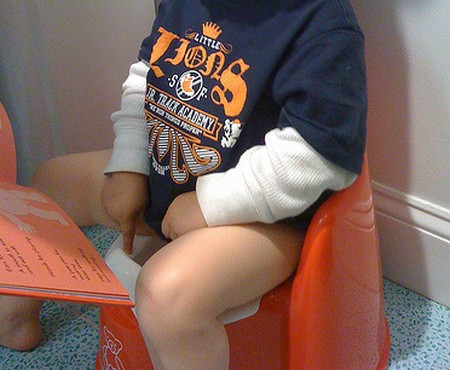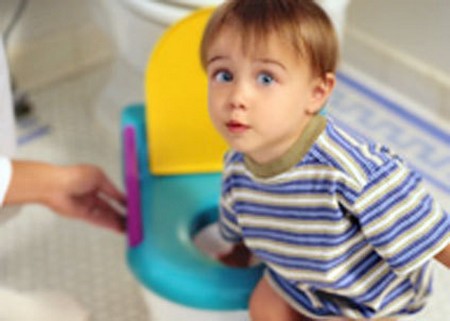Toilet training is the first major battle of wills between parents and preschoolers. The war breaks out when parents ask their independence-loving offspring to give up something that is second nature to them and to begin doing something that is new and often undesirable. To most children, what is desirable about toilet training is pleasing their parents. So foster the least accident-prone toilet training possible by putting more attention on what your child should do (keep her pants dry, go to the bathroom in the potty) than on what she shouldn’t do (go potty in her pants). Help your child feel proud of herself while you lessen the likelihood that she will have an accident just to get your attention and reaction.
Note: If your child is having continuous toileting accidents after the age of four, consult a medical professional. Many authorities believe that after age six, bed-wetting may be considered a problem that requires professional help.

Preventing the Problem
Look for signs of readiness (usually around two years of age).
The generally accepted signs of readiness include a child’s awareness of the fact that she’s urinating or defecating (or is about to do so); more regular and predictable elimination patterns; the ability to pull her pants down and climb on the toilet (and do the opposite); the ability to understand toileting terminology and follow simple directions; an interest in toileting; and a general dislike of having a soiled diaper.
Don’t train too early.
Early training simply teaches children to depend more on their parents than on their own ability to manage toileting. Children who are forced to learn before they’re ready take longer to master toileting.
Model correct potty behavior
Familiarize your child with the potty and how it’s used by showing her how you go to the bathroom (and how she can when she’s ready).
Make it as convenient as possible for your child to use the potty when she needs to go.
Keep the potty chair in the kitchen, for example, during toilet training. Take the potty with you in the early stages, to help your child feel comfortable about pottying outside the home.
Choose a toilet training procedure and stick with it.
Many resources (books, tapes, and videos) are available to help you toilet train your child. Find one that feels comfortable to you and consistently follow through with the recommended methods. Consistency and patience are the keys to success!
Solving the Problem
What to Do
Reward being dry as well as correct toileting.
Teach your child to keep herself dry by telling her how good staying dry is. This increases her awareness of what you want her to do (stay dry). About every fifteen minutes say to your child, “Check your pants. Are they dry?” This gives her the responsibility of checking her dryness, which makes her feel more in control of the process. If she’s dry, tell her you’re glad. Say, “How nice that you’re staying dry.”
Remind your child of the rule for going potty in wrong places-Many preschoolers occasionally go to the bathroom in an inappropriate place (outside, for example). When your child has that experience, remind her that the rule is, “You’re supposed to potty in the potty. Let’s practice.” Then proceed with practicing correct pottying procedures.
React calmly to accidents.
If your child is wet, say, “I’m sorry that you’re wet. Now we need to practice staying dry” Then practice ten times going to the toilet from various parts of the house, (Pants down, sit on the toilet, pants up. Then repeat these steps in the next part of the house.) In practice it’s not necessary for your child to urinate or have a bowel movement, but only to go through correct toileting motions.

Use Grandma’s Rule in public.
When your child wants to go only in her potty when you’re in a public place, try Grandma’s Rule. Say, “We need to keep dry. One potty is the same as another. We can’t use your potty because it’s not here. When you’ve used this potty, we can go on a trip to the zoo.” If you prefer, take your child’s potty with you.
What Not to Do
Don’t punish toileting accidents.
Punishment only gives your child attention for toileting in her pants (or another wrong place). It doesn’t teach how to stay dry.
Don’t ask the wrong question.
Saying “Check your pants” increases your child’s awareness and puts her in charge. It’s a good substitute for “Do you need to go potty?” which is generally answered with a “No.” Help your child feel responsible for checking her dry-wet condition and doing something about it.